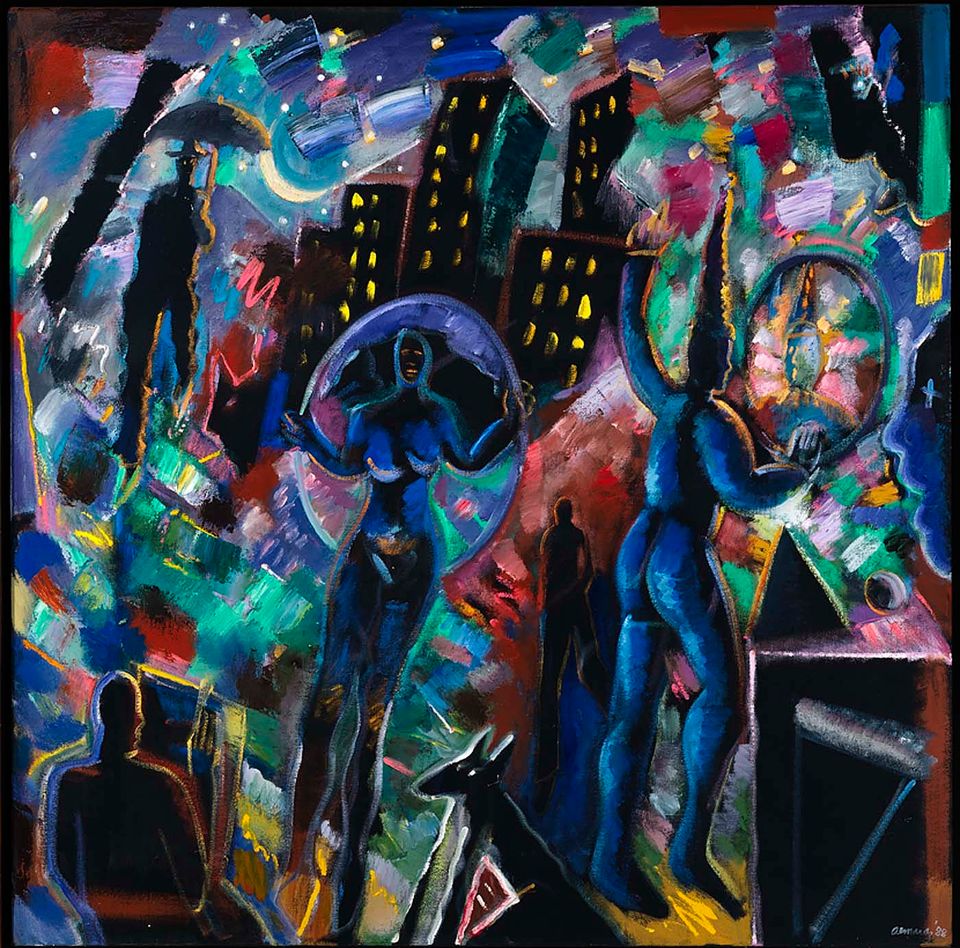Artwork Details
- Title
- El Velorio de Oller en Nueva York
- Artist
- Date
- 1974, revised 1984
- Location
- Not on view
- Dimensions
- sheet and image: 25 7⁄8 x 39 7⁄8 in. (65.7 x 101.3 cm)
- Copyright
- © Hermiñia Ramos
- Credit Line
- Museum purchase through the Luisita L. and Franz H. Denghausen Endowment
- Mediums Description
- hand-colored screenprint
- Classifications
- Subjects
- Figure group
- Cityscape — New York
- Architecture Interior
- Object Number
- 2013.60.1
Artwork Description
Our America: The Latino Presence in American Art, 2013
A comienzos de los años setenta, Soto Sánchez vio la obra de Francisco Oller El Velorio (1893), una pintura emblemática de Puerto Rico que representa a un baquiné, la costumbre popular católica con la que se conmemora la muerte de un niño. En la isla, esta tradición está relacionada con los sistemas de creencias de la diáspora africana. La versión de Soto Sánchez tiene lugar en la ciudad de Nueva York y está poblada de figuras con cabezas brotando de varias partes del cuerpo como las articulaciones. Estas formas mutantes son manifestaciones visuales del ritual de posesión espiritual que caracteriza à la santería. Soto Sánchez formó parte de una comunidad de artistas puertorriqueños en diáspora quienes, a diferencia de muchos miembros de las élites de la isla, afirmaron la importancia de la cultura afropuertorriqueña.














